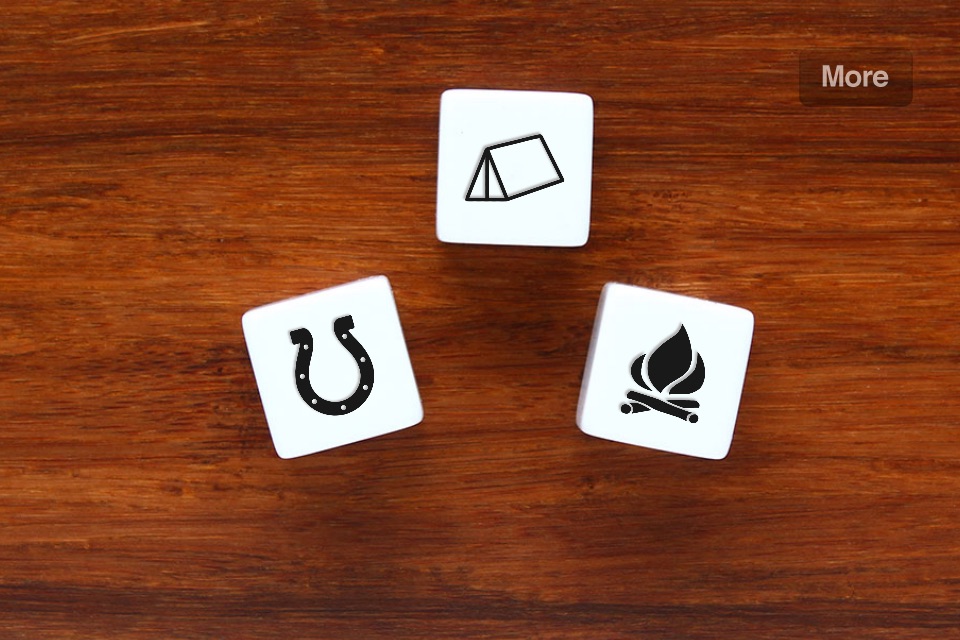
Story Dice by Thinkamingo
Story Dice is a creative writing prompt tool to come up with ideas for plot, character, and setting. It can be used for both written and oral storytelling.
* * * * *
"What we like to do, is take turns, each of us telling a story that uses all of those elements. And then we, as a family, vote on the best one." - Mark Frauenfelder, editor of Make Magazine, appearing on NPR Morning Edition
* * * * *
This app can be used with a wide variety of age groups ranging from preschoolers to middle school and high school language arts students. The user interface is simple enough for ages 3+ to use without any additional instruction. The use of the app does not require reading, so it is an ideal tool for using in a preschool story circle (see lesson plans) as well as a general writing prompt for all ages without reading or native language barriers.
Features:
- Universal App!
- High-resolution graphics supporting Retina Display
- Choose number of dice to roll, 1-10.
- Realistic dice sounds and still images.
- 200+ pictograms in dictionary.
- Swipe to view previous rolls.
- No reading necessary.
- Optional game instructions included in app.
Game Ideas:
1. Charades - Use the single die roll to determine a charade item.
2. Stories With Friends - Form a circle. Roll the Story Dice (any number, 1-10). Create a sentence including all of the items from the dice. Pass to the next person and repeat, adding onto the story each time.
3. Song Challenge - Roll a single story die. Come up with a song that includes that item in the lyrics.
4. Poems With Friends - Same Stories With Friends, using only 1-2 dice, and create rhyming lines.
5. Drama Club - Roll dice (any number). Form a character using these items, then create an improv skit with friends as your characters!
* * * * *
“Pictograms do not require the ability to read, which is great for my Kindergarteners and those who have difficulty reading.” - Consonantly Speaking, SLP blog
* * * * *
Education Applications:
Story Dice is primarily useful in higher order activities under Bloom’s Taxonomy, particularly Synthesis, where you create, invent, compose, predict, plan, construct, design, imagine, propose, devise, and/or formulate. You can devise less and more challenging activities, as in the following example.
Sample Journal Activity “My Perfect Day” using Bloom’s Taxonomy
Student/Short Version: Student will create a character using Story Dice, then describe/write/dramatize their own “perfect day” from their character’s perspective.
Teacher Version: Student will create a unique character using the Story Dice for seed ideas. After writing a short character sketch, student will compose a Journal Entry called “My Perfect Day” writing from their new character’s perspective. The evaluation step is the highest order activity and is a self-grading option.. Finally, a fun bonus option in a classroom or small workgroup setting is to have students perform their journal entries as monologues, in character, possibly interacting with each other, adding a drama element.
1. Knowledge: Roll five or more Story Dice. Identify and describe the pictures on dice.
2. Comprehension: Paraphrase the task (Journal Activity “My Perfect Day”) in which you will use the dice.
3. Application: Prepare a chart with five categories: name, age, job, pets, hobbies. Place each dice image within a category. Imagine that you are this character and write a short paragraph describing yourself in detail.
4. Analysis: Examine each feature of your character and determine what makes them special.
5. Synthesis: Compose a journal entry called “My Perfect Day” from the character’s perspective.
6. Evaluation: Decide what worked and what didn’t in your journal entry. Were you successful at combining the dice pictures in a believable way?
BONUS Activities: Perform journal entry as a monologue and interact with other students. Stay in character!



